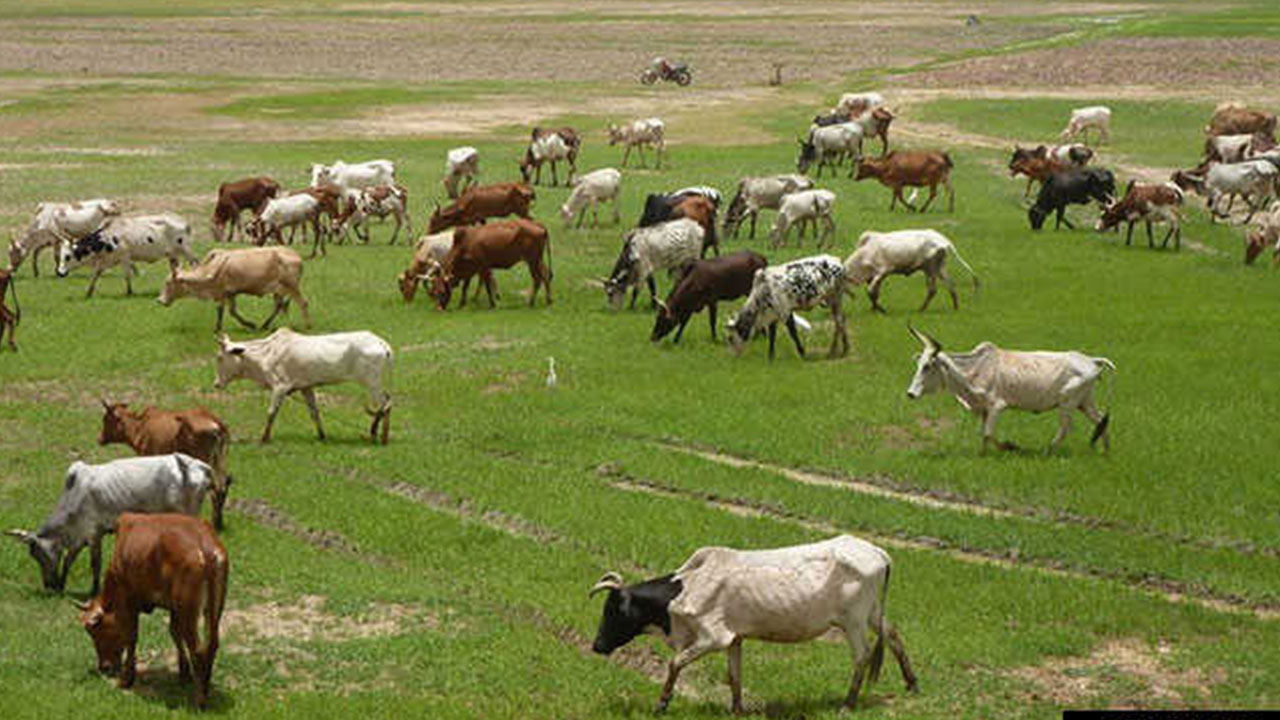With the incessant attacks between farmers and herders, state governments, mostly in the South, have resolved to ban open grazing and adopt ranching as an alternative to the age-long practice of herders roaming with their cattle to seek pasture for their herd.
As the call for the adoption of ranching grows, herders, who are mostly drawn from the Fulani ethnic group, have expressed lack of knowledge on how the new system would work for them.
- BREAKING: 4 killed as IPOB attack another police station in Imo
- Insecurity: Obiano bans motorcycles, tricycles in Anambra
This is evident in a statement made by the Sarkin Fulani of Iwo in Osun State, Alhaji Momodu Adamu, during a summit in which he stated that “most Fulani are unaware of what ranching means. Ranching is strange to us. We are willing to learn. We want the government to teach us about it. We will continue to live in peace.”
What is ranching
The National Geographic said ranching involves rearing livestock, especially cattle, on a vast area of land. This activity, which is business oriented, enable livestock to graze in a controlled land for pastures, fodders and water provided for consumption through purchase of hays and growing of pasture.
The practice is not a sedentary mode of grazing since the spacious land allows herders to walk around with their herd to consume grown fodder in a confined area.
However, growing fodder in the grazing area might not be sustainable as lack of rainfall or water to grow it would result in shortage. Overgrazing is another factor making it unsustainable.
The concentration of livestock in an area, as ranching offers, reduces the proclivity of fat reduction among cattle as well as contributes to the livestock subsector. National Geographic notes that “Ranching is an efficient way to raise livestock to provide meat, dairy products, and raw materials for fabrics. It is a vital part of economies and rural development around the world.”
But the livestock industry has effects on the environment through contributing to air and water pollution. Harmful products from ranches can include manure, antibiotics and hormones given to the animals, as well as fertilizers and pesticides. Similarly, chemicals from tanneries that treat animal hides can also seep into water.
Facilities
In an article, Encyclopedia Britannica states that barns, which serve as shelters, are the most important elements in a ranch. This facility is enclosed thus wouldn’t be suitable for a nomadic herder who has developed a strong relation with his herd. As such, a pen would be more suitable to keep a close eye on them.
Other facilities are a milk parlour, mowers, tractors, hay barns, water irrigation system and a stall barn for the animals to rest, feed, milk and watered. With electricity not reliable, components of solar can be a feature in ranches in Nigeria.
Ranching and the National Livestock Transformation Plan
A human rights lawyer Femi Falana said that “ranching is not a new development in Nigeria with the first ranch in Nigeria established in Cross River State at Obudu in 1951 by the British,” but was taken over by Eastern Regional Government after independence.
He added that the Awolowo regime had a ranch in Akunnu, now Ondo State with Ahmadu Bello establishing one in Mokwa, Niger State. During Yakubu Gowon’s regime, Audu Bako had the best ranches in the country in Kano.
Also, there are grazing reserves which are domiciled on bigger lands that house many herders and their families in some parts of the north.
With the ranches no longer functioning, the federal government in 2018 introduced the National Livestock Transformation Plan (NLTP). The plan which was piloted in Adamawa in 2019 had the backing of the National Economic Council composed of the governors of the 36 States governors and chaired by the Vice President, Yemi Osinbajo.
The NLTP is a N100 billion 10-year initiative (2019-2027) that would ensure Economic growth and avert the farmers/herders crises.
The plan will see to the creation of four ranch sizes housing 30, 60, 150 and 300 cows with feeding facilities, watering facilities, a market and a breeder ranch for a minimum of 1,000 cattle.
Osinbajo in a speech during the launch of the programme said the ranches would propel integrated business centre for commercial crop production, the supply of livestock materials and facilitation of improved access to basic services for herders.
According to him, participating states “will provide the land as its own contribution to the project. The Federal government merely supports the project. It is a plan that hopes to birth tailor-made ranches where cattle are bred, and meat and dairy products are produced using modern livestock methods.”
During his presentation, he delinked the NLTP from the controversial cattle ranching colony, RUGA, which was perceived in some quarters as a land-grabbing project by the federal government to house herders and their families in a particular area.

 Join Daily Trust WhatsApp Community For Quick Access To News and Happenings Around You.
Join Daily Trust WhatsApp Community For Quick Access To News and Happenings Around You.


